Disclaimer: This post may contain Amazon affiliate links. Sudachi earns a small percentage from qualifying purchases at no extra cost to you. See disclaimer for more info.
Featured Comment:
“Yet another easy to follow and delicious recipe from you 🙂 Hope you know how much joy you bring to people like me that do not have easy access to japanese ingredients!”
– Dee
What is Tsubuan?
Tsubuan (粒あん) is a sweet and chunky paste made from red adzuki beans. The beans are simmered until soft, then crushed and mixed with sugar and a small amount of salt to form a delicious red bean paste with a great texture.
Tsubuan is a type of “anko” (餡子), which is the Japanese term for “red bean paste”. The word “tsubu” means “grain”, and refers to the fact that the beans are roughly crushed with the skins on, leaving some whole.
With a little time and patience, it is easy to make your own homemade tsubuan from scratch and you can use it to make a whole range of delicious Japanese sweets. Whether you’re filling dumplings, flavoring desserts or simply spreading it on toast, tsubuan is a delicious addition to all kinds of recipes!
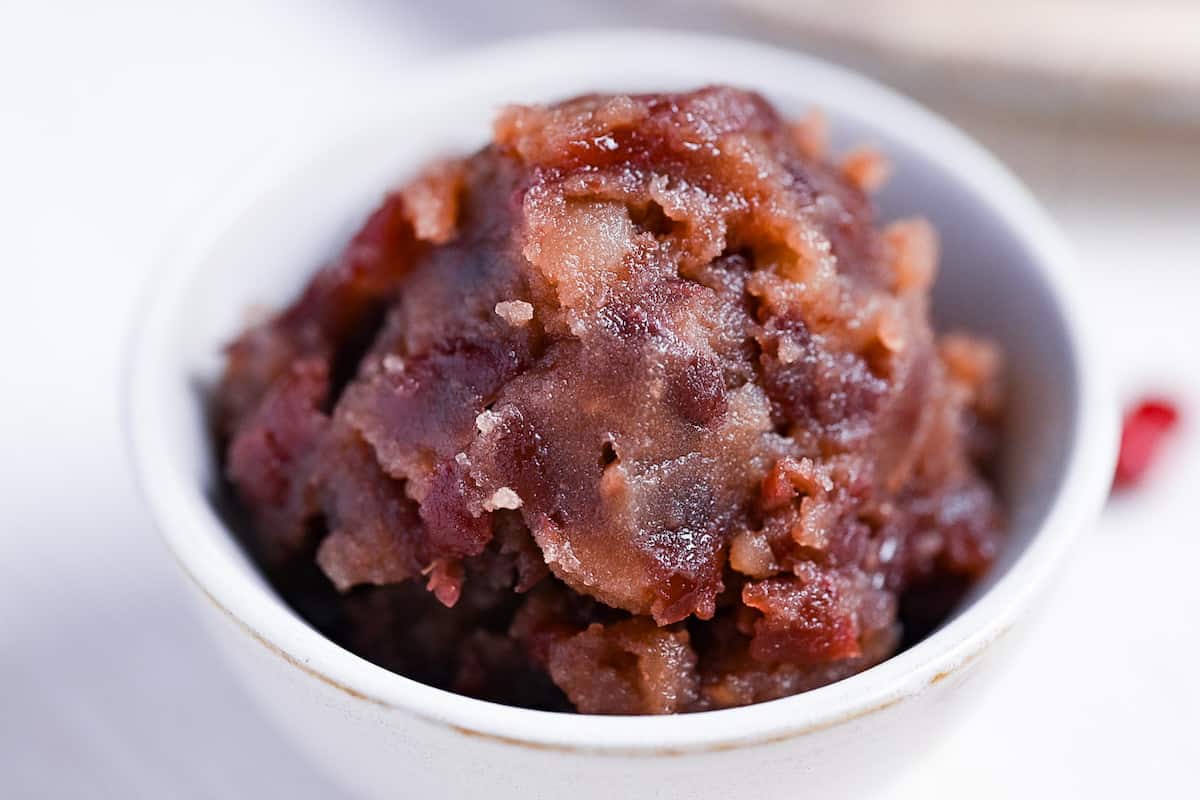
Types of Red Bean Paste
There are two main types of red bean paste in Japan, “Tsubuan” (chunky) and “Koshian” (smooth). Although the ingredients are the same, making koshian requires more work since the skins of the adzuki beans need to be removed. The end result is a smooth and refined red bean paste with no lumps or grains. Koshian can also be made at home using a cheesecloth (I’ll be posting a recipe for homemade koshian soon!)
The difference between tsubuan and koshian is similar to the difference between smooth and chunky peanut butter, the taste is the same but the mouthfeel and overall experience is different. They are also typically used in different desserts, although can be generally interchangeable according to personal preference.
What are Adzuki Beans?
Tsubuan is made from a small red bean called adzuki (小豆). Adzuki beans are also known as azuki beans, aduki beans, red mung beans or simply “red beans” in English.
It is said that adzuki beans originated from the Himalayas and eventually spread to China, Korea, Japan and all over Asia. More than 90% of adzuki beans in Japan are grown in Hokkaido.
Adzuki beans are extremely popular in Asian desserts and are the second most commonly used bean in Japan, only second to soybeans. You can buy them dried (like these on Amazon) or pre-boiled and canned. Since the canned beans often already contain sugar or salt, I use dried beans in this recipe.
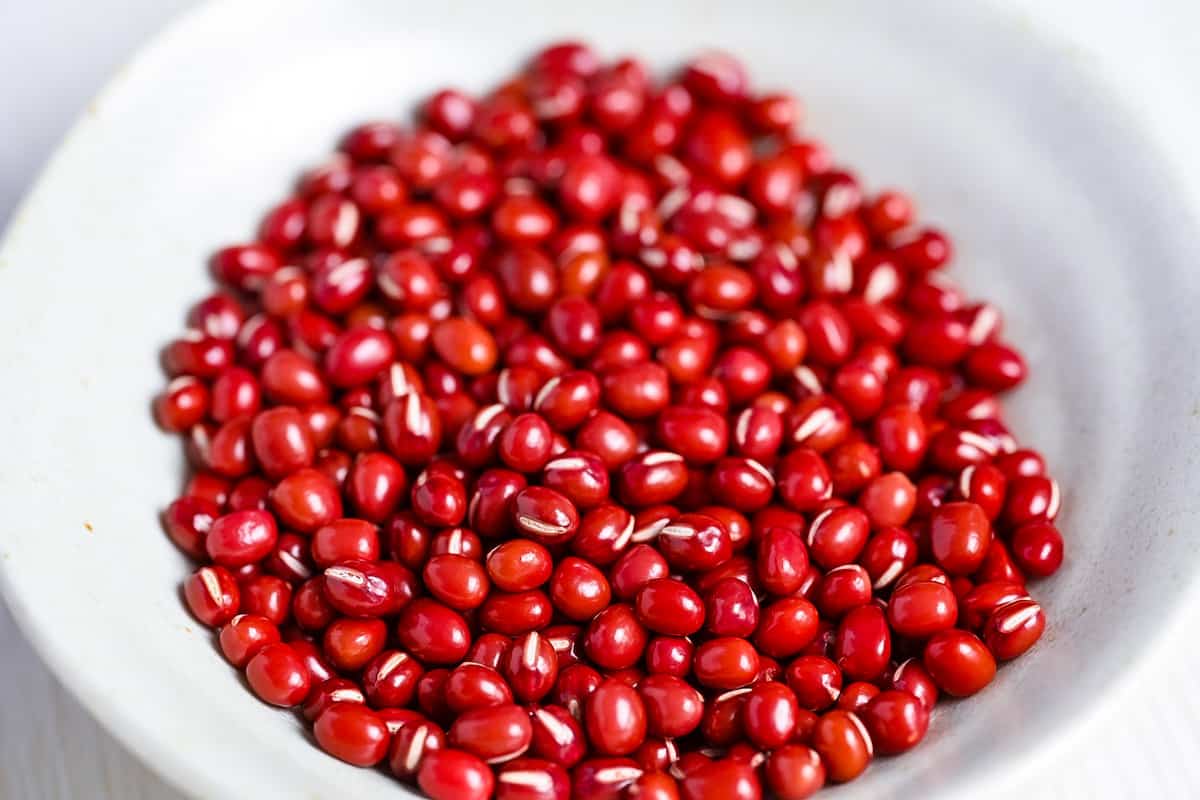
Ingredients & Substitution Ideas
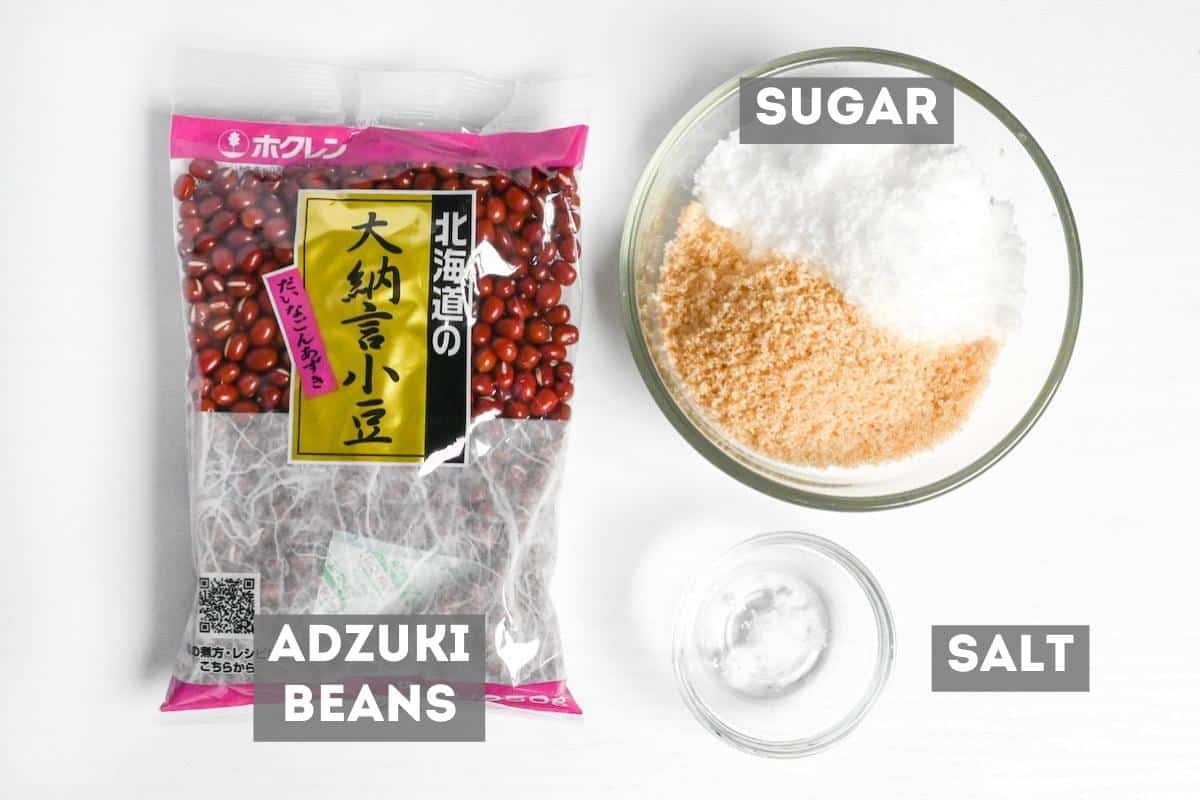
Making homemade tsubuan requires just 3 simple ingredients:
- Dry adzuki beans – Use good quality adzuki beans for this recipe. Make sure to check the best before date, since old beans will not soften enough no matter how long you simmer them (speaking from experience!). I personally used dainagon adzuki beans for this recipe (which are a little bigger and more luxurious version of regular adzuki beans), but regular adzuki beans work perfectly well.
- Sugar – It’s totally optional, but I recommend using a mixture of granulated white sugar (60%) and light brown sugar (40%). The granulated sugar makes the tsubuan sweet and highlights the flavor of the beans while improving the consistency of the paste, whereas the brown sugar adds a bit of depth without being overpowering. You can experiment with the ratio according to your preference, or you can simply use one kind of sugar. Avoid using dark brown sugars with a strong flavor since they will overpower the flavor of the beans.
- Salt – A pinch of regular sea salt helps bring out the flavor and balance the sweetness.
Similar to making a traditional jam, using an equal weight of adzuki beans and sugar works best. If you prefer to reduce the sugar, I don’t recommend going lower that 80%. 100g of adzuki beans produces approximately 300g of tsubuan.
Jump to Full Recipe Measurements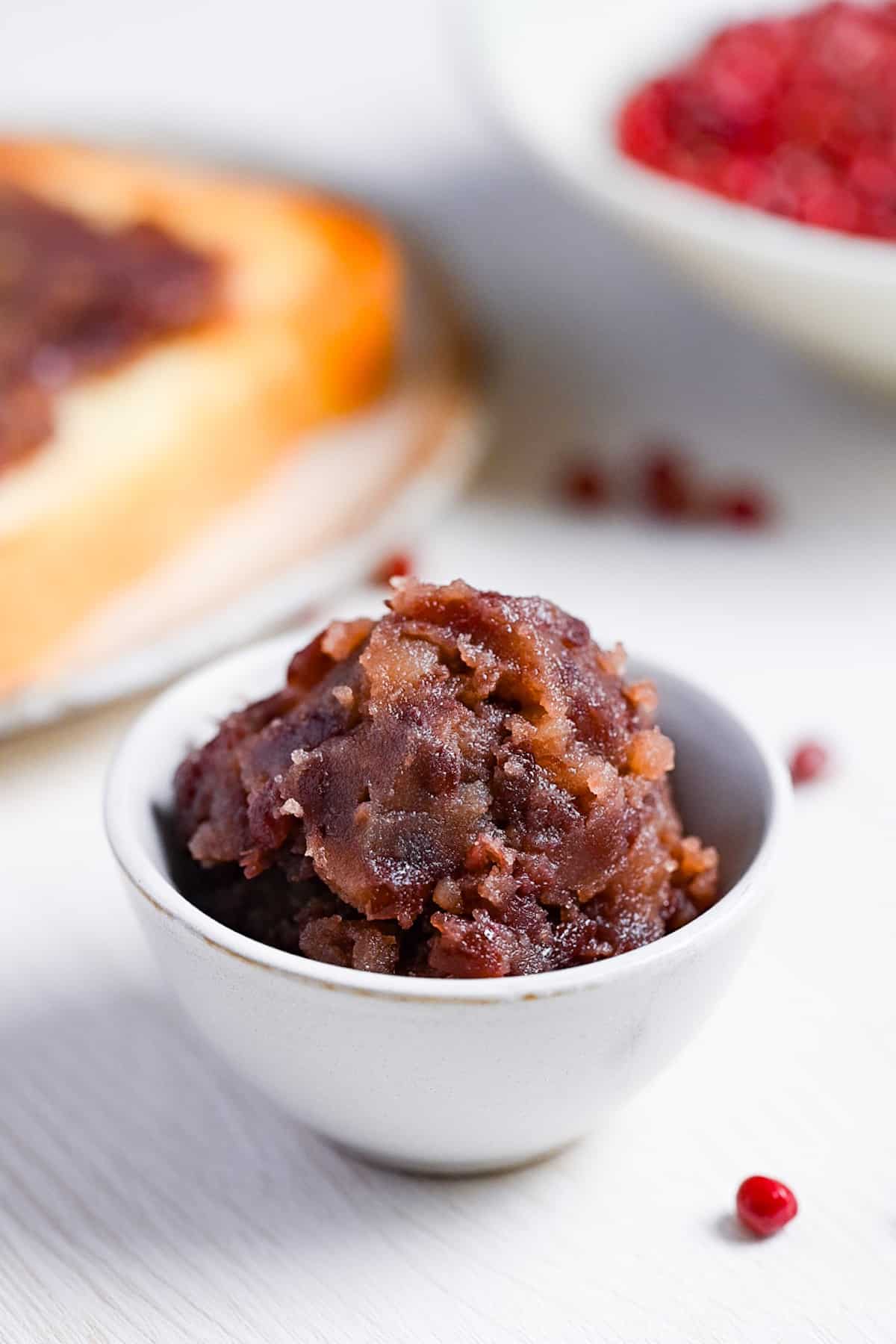
Visual Walkthrough & Tips
Here are my step-by-step instructions for how to make Chunky Red Bean Paste at home. For ingredient quantities and simplified instructions, scroll down for the Printable Recipe Card below.
How to Boil Adzuki Beans
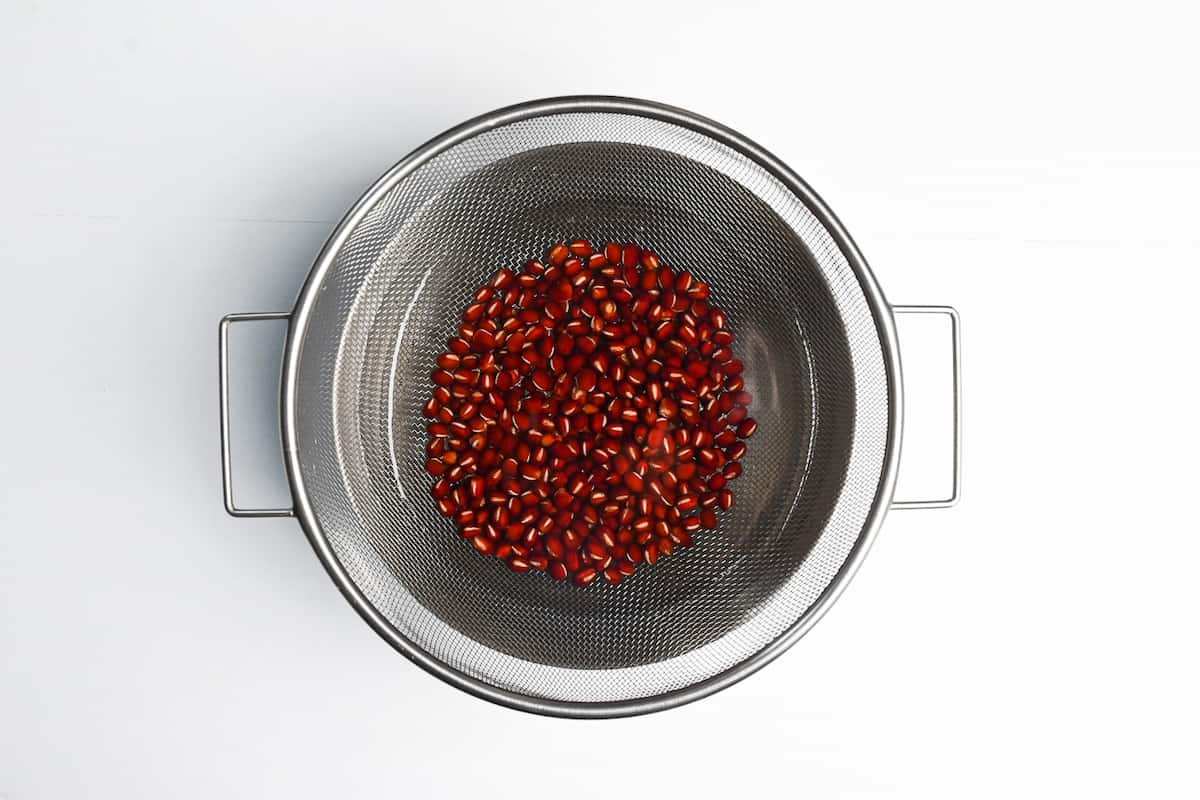
It is important to wash the beans first to remove any dust and debris. This also gives you a chance to inspect the beans and remove any broken ones.
Place the adzuki beans in a sieve and submerge them in a bowl of water. Swish, drain and repeat 3 times in total.
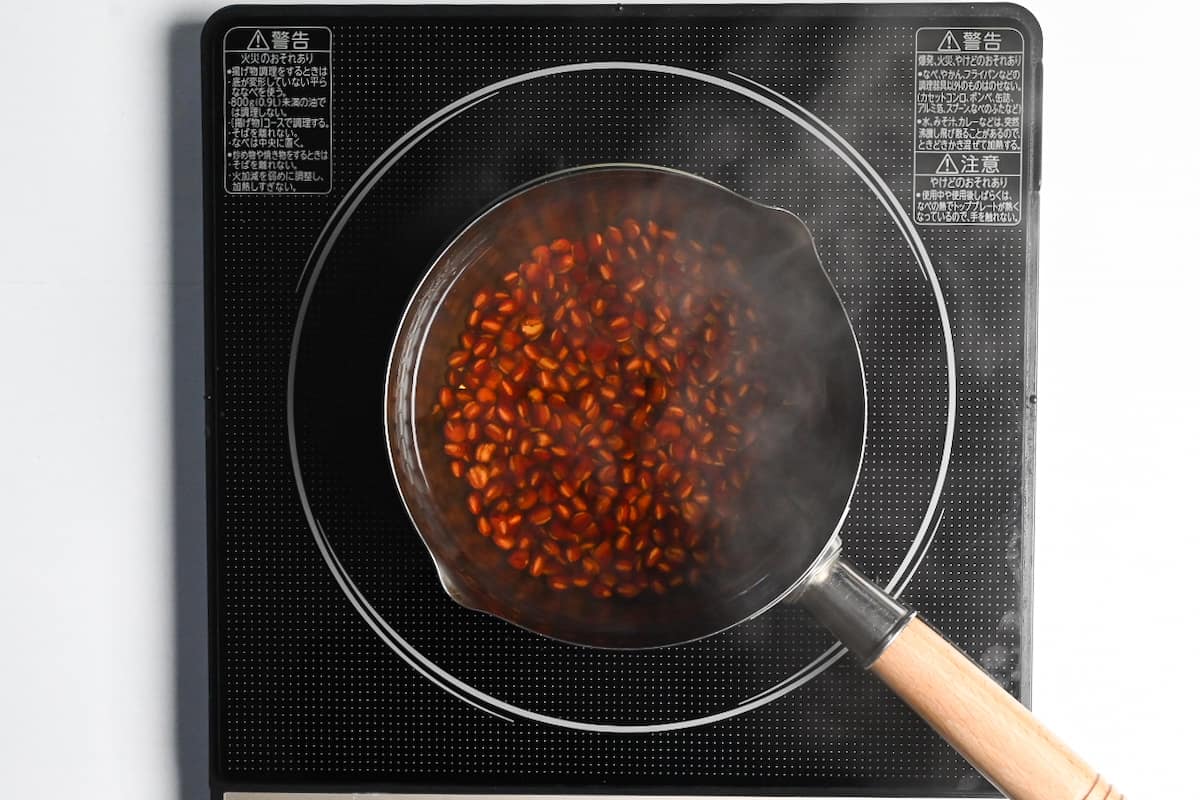
Place the adzuki beans in a pan and add fresh water until fully submerged. The water should be 3-4 times the volume of beans. Bring to a boil over medium heat and leave it to bubble for 10-15 minutes. This first boil not only helps plump up the beans (similar to soaking) but it also removes the astringency.
Soaking adzuki beans is optional, not necessary. Soaking doesn’t improve the texture or taste, but it can reduce the cooking time by up to 20-30 minutes depending on how long you soak them. If you want to decrease the cooking time, feel free to soak them from 1-12 hours.
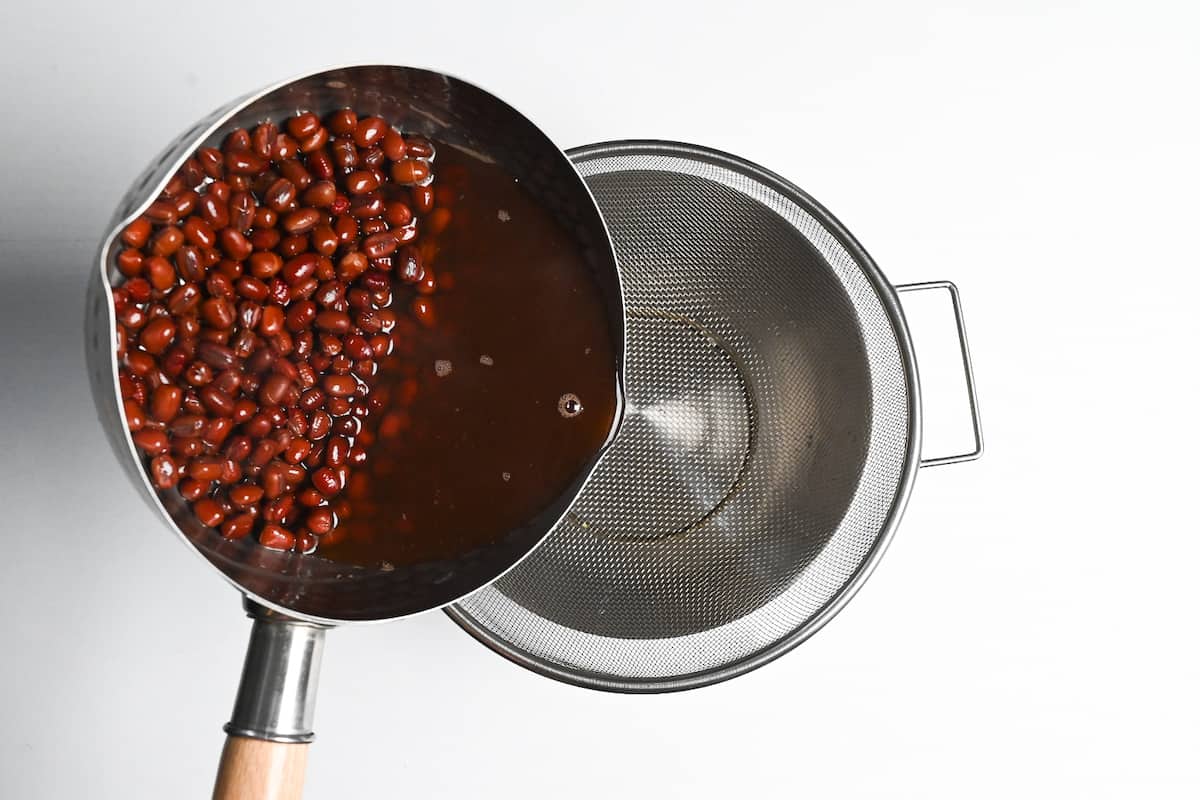
After 10-15 minutes, drain the water and discard.
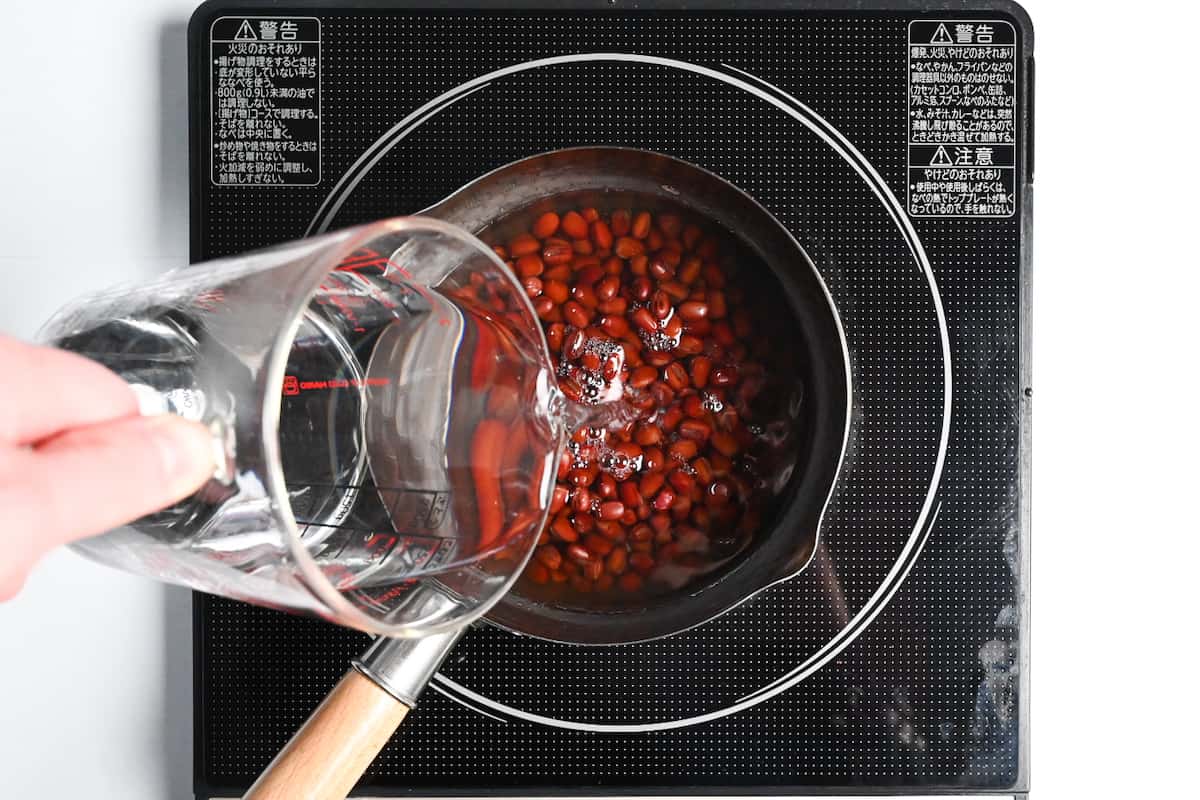
Rinse out the pan and add the adzuki beans back in. Pour in fresh water, 3-4 times the amount of adzuki beans, making sure they’re fully submerged.
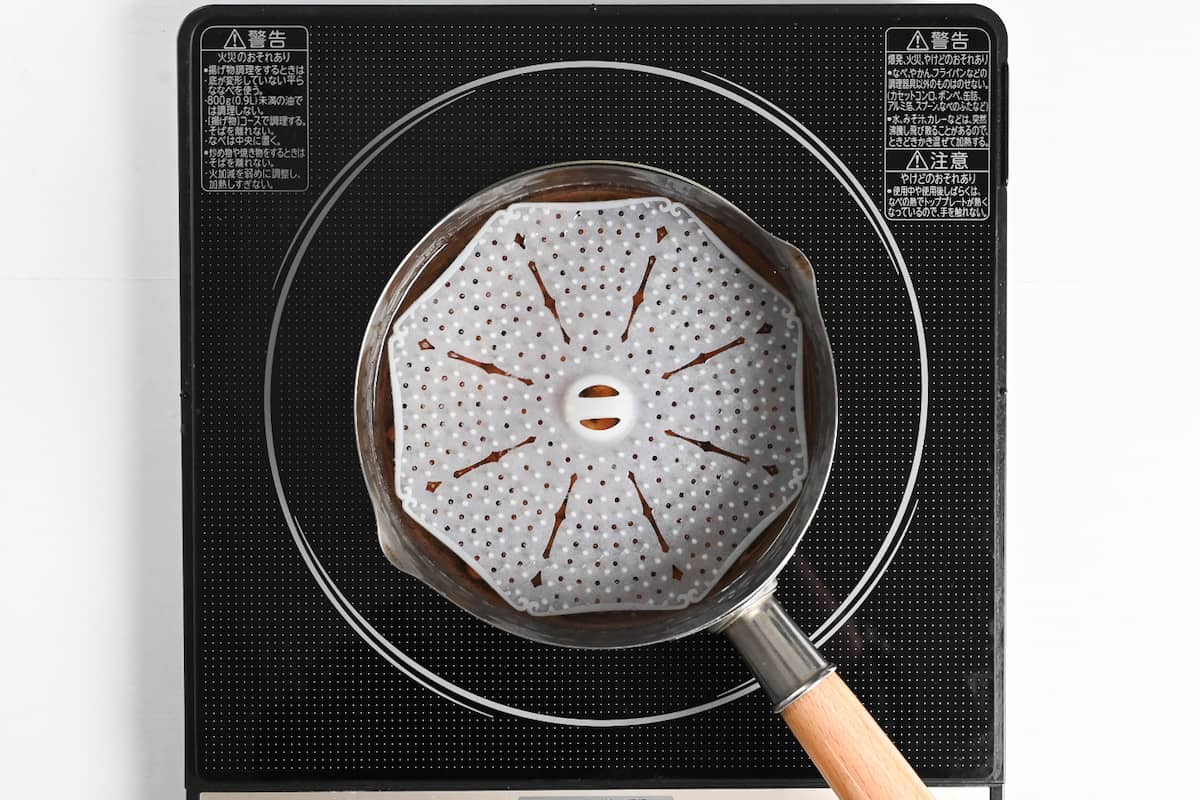
Bring to a boil over medium heat and place a drop lid on top. Lower the heat slightly, the water should be gently boiling (not simmering nor rolling boil). Cook until the beans are soft to the core, this can take 45-90 minutes depending on the temperature of the water and condition of your beans.
A drop lid isn’t essential, but it does help keep the beans submerged in the water and cook more evenly. If you don’t have a drop lid, you can place a piece of baking paper or foil on top.
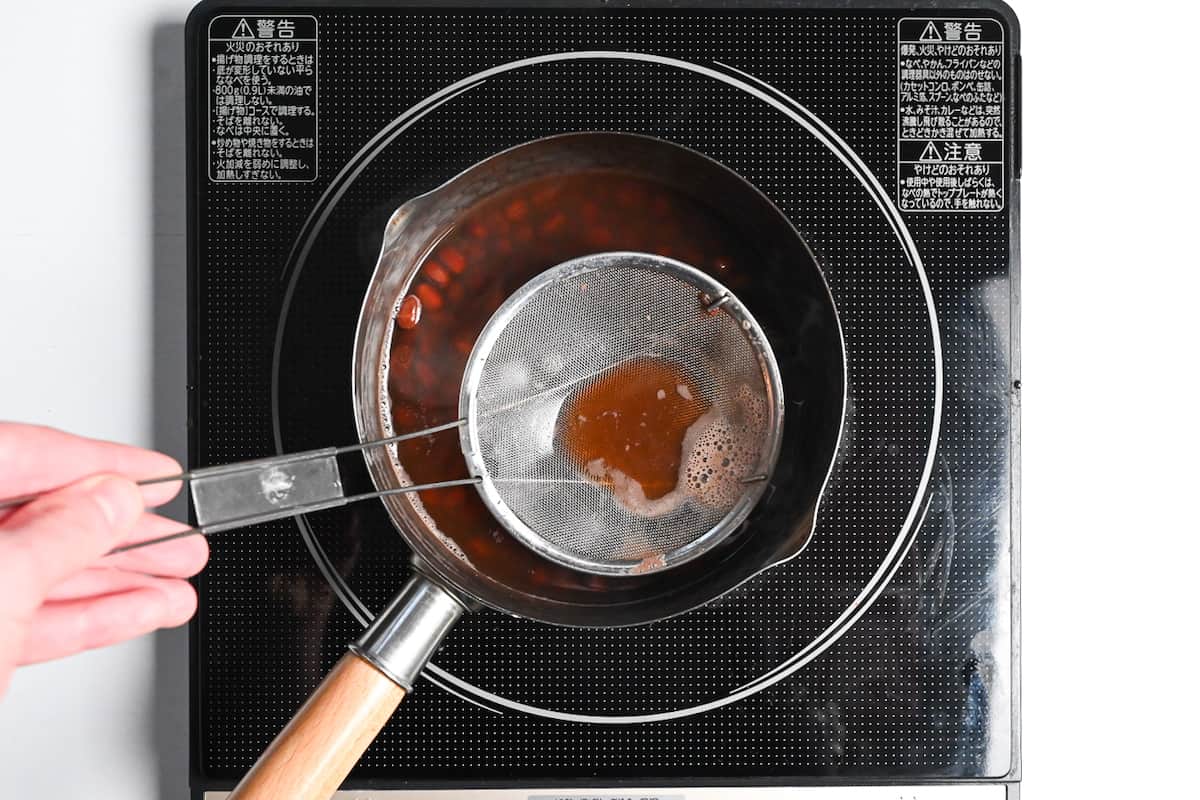
Check the beans regularly to ensure they’re always fully submerged. If the water depletes, top it up a little at a time to prevent lowering the temperature of the water too much.
Scoop out any scum that forms around the top and edges of the water. (You might need to remove the drop lid when you do this.)
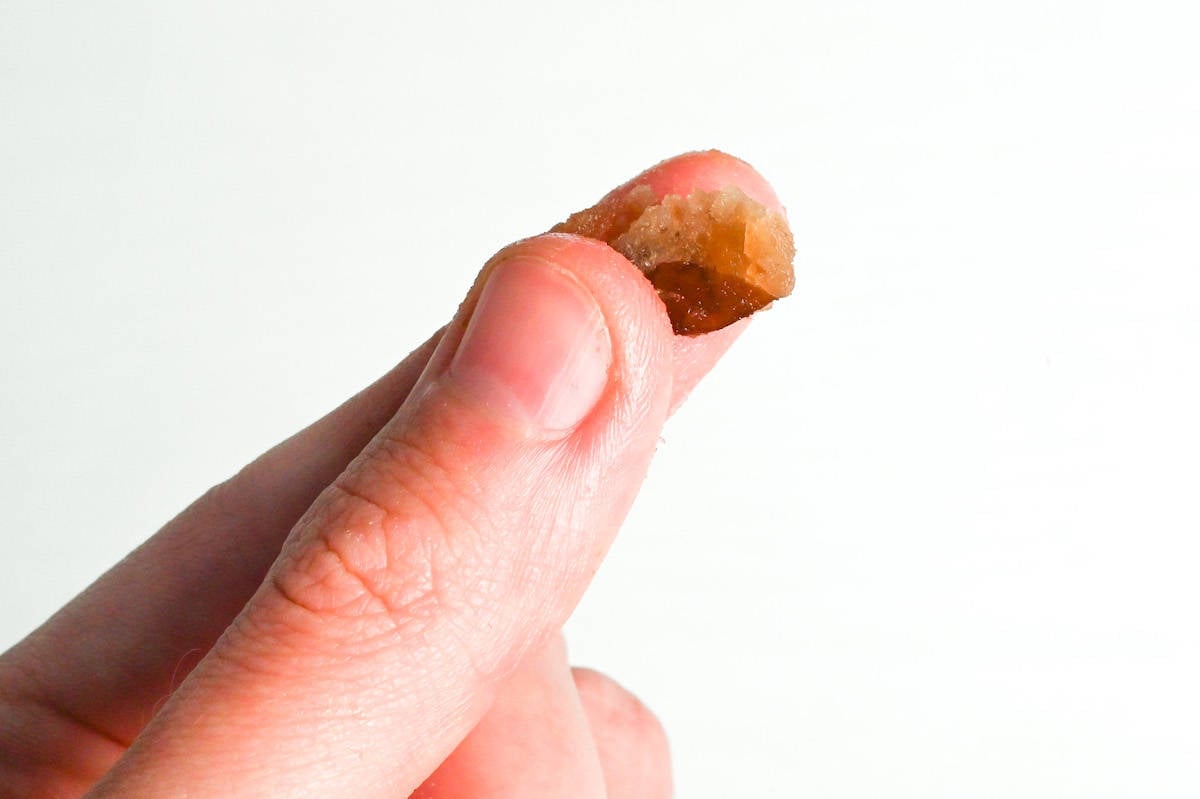
After 45 minutes, remove a few beans with a mesh spoon and run them under cold water to cool them quickly. Press the beans between your thumb and forefinger, if it can be spread like a paste then it’s fully cooked. If the core is still a little hard, continue to cook and test every 10 minutes.
Once cooked through, remove from the heat.
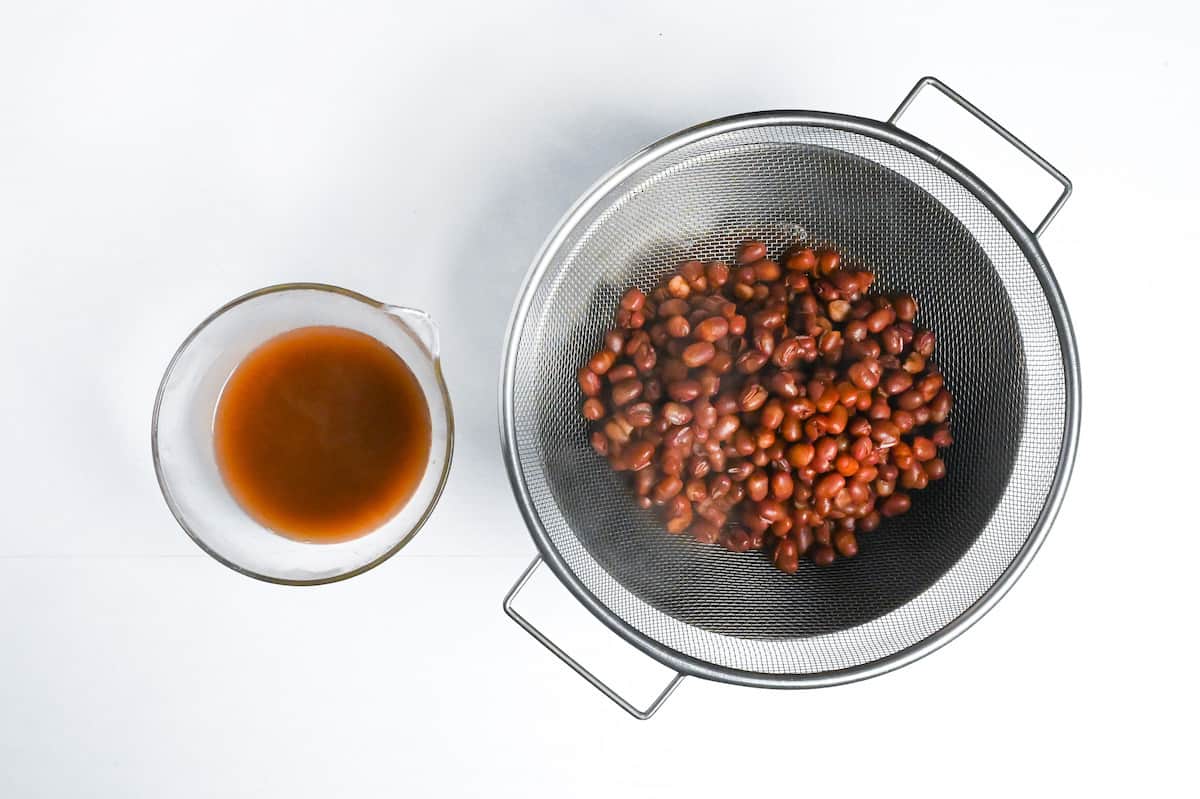
Once the beans are fully cooked, save a few tablespoons of cooking liquid in a heatproof bowl and drain the rest. You can discard it or drink it as “red bean tea”.
How to Make Tsubuan
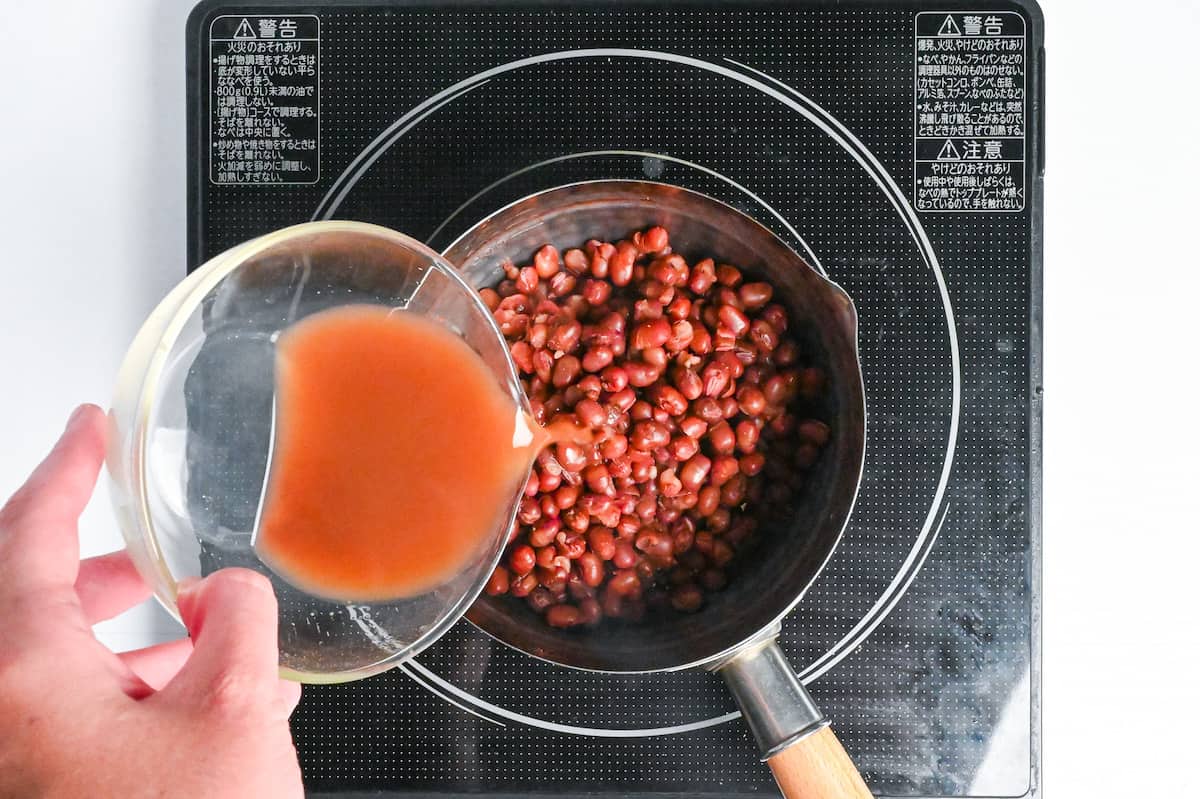
Return the beans to the pot once more and add a 1-2 tbsp of the leftover cooking liquid.
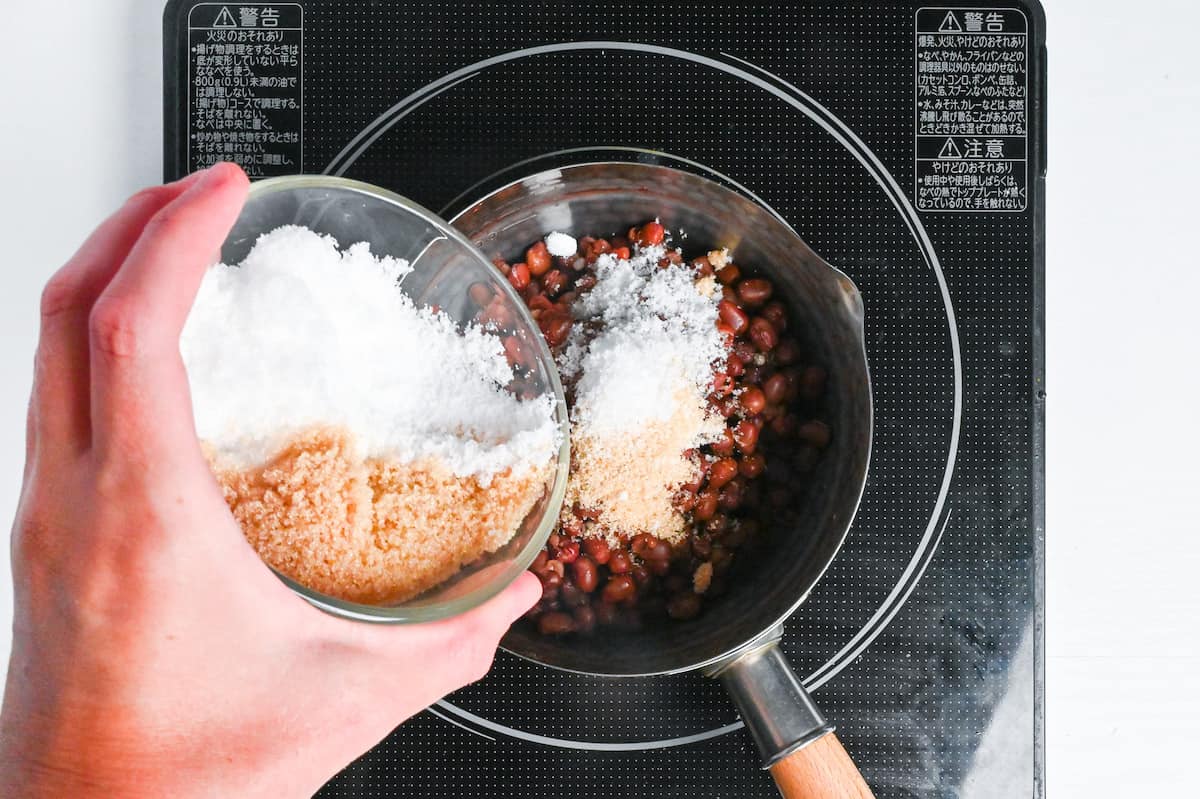
Add one-quarter of the sugar and mix. Heat on medium-low while stirring continuously, lightly crush some of the beans as you go (but be careful not to crush too many).
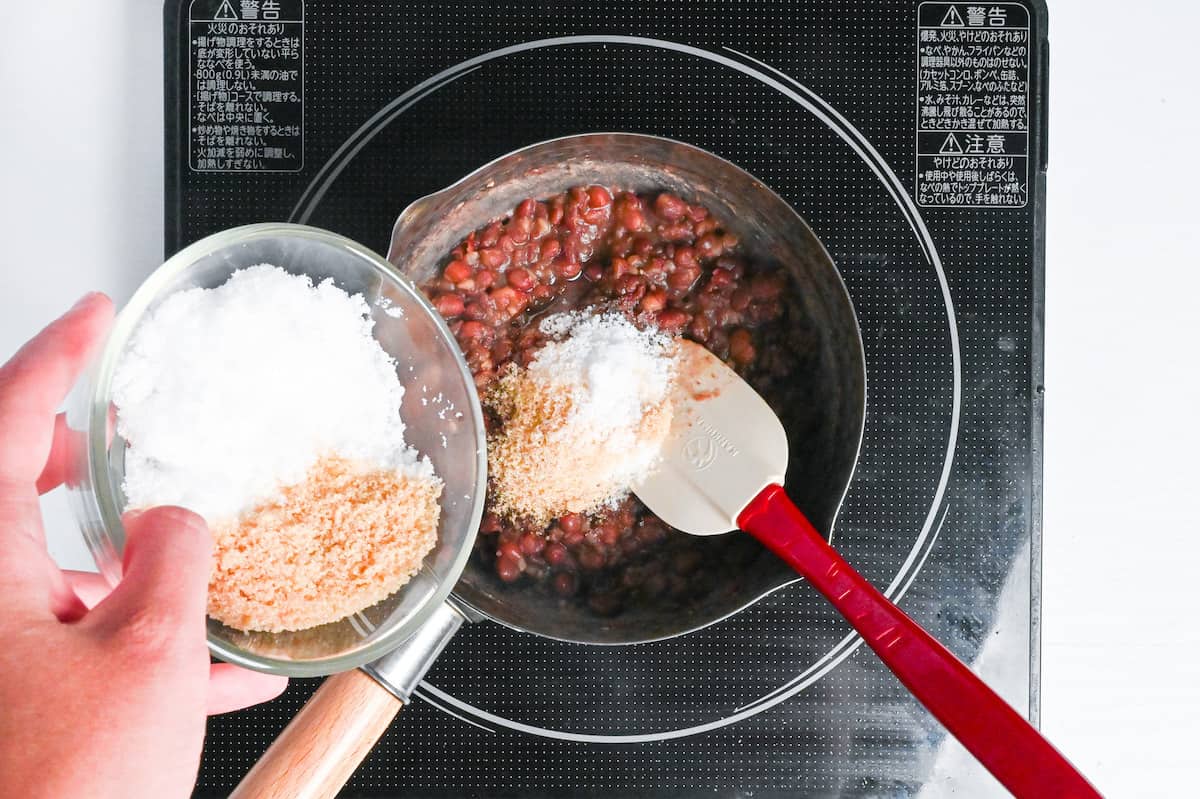
Each time the mixture thickens, add another quarter of the sugar. This will thin it out again. Keep stirring and scraping the bottom and sides of the pot to prevent burning.
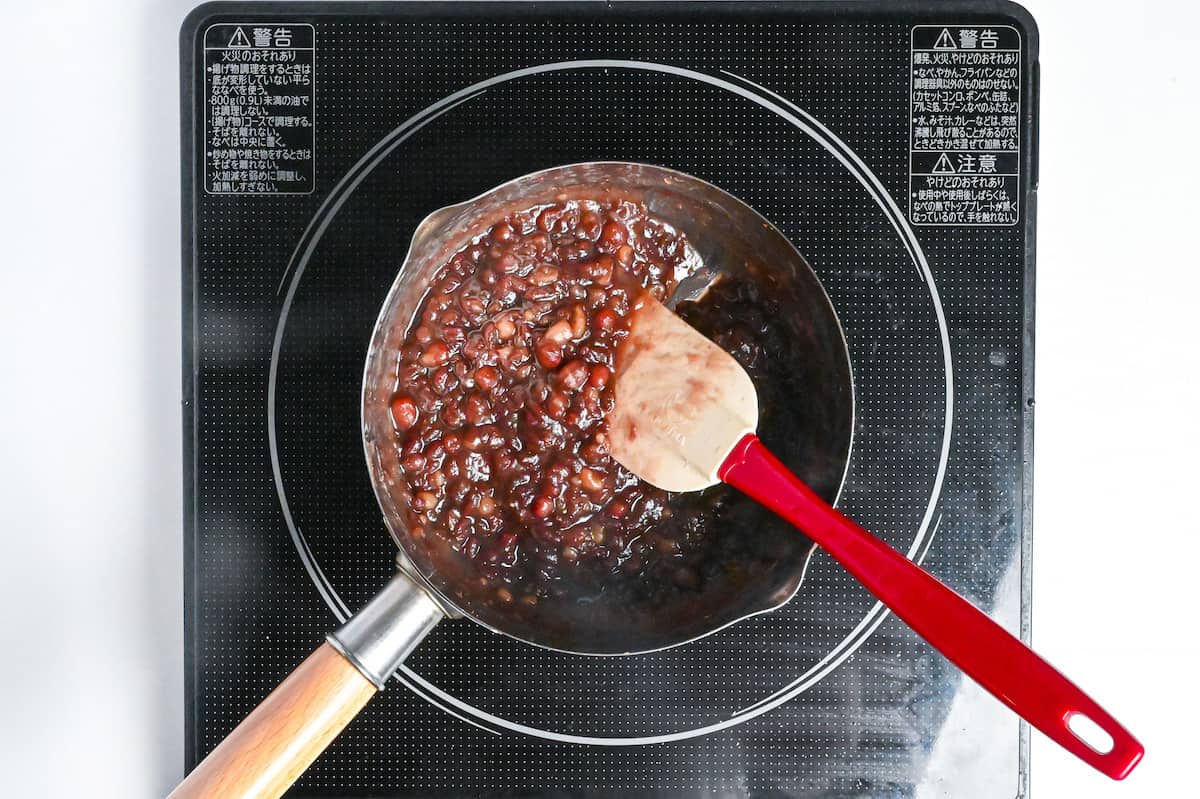
Once all the sugar is added, continue to stir over the heat until slightly thickened. The texture should be a little loose but not watery. Be careful not to thicken too much, as it will thicken more once it has cooled. If you accidentally cooked it for too long, add a little more leftover cooking liquid from earlier to thin it out once more.
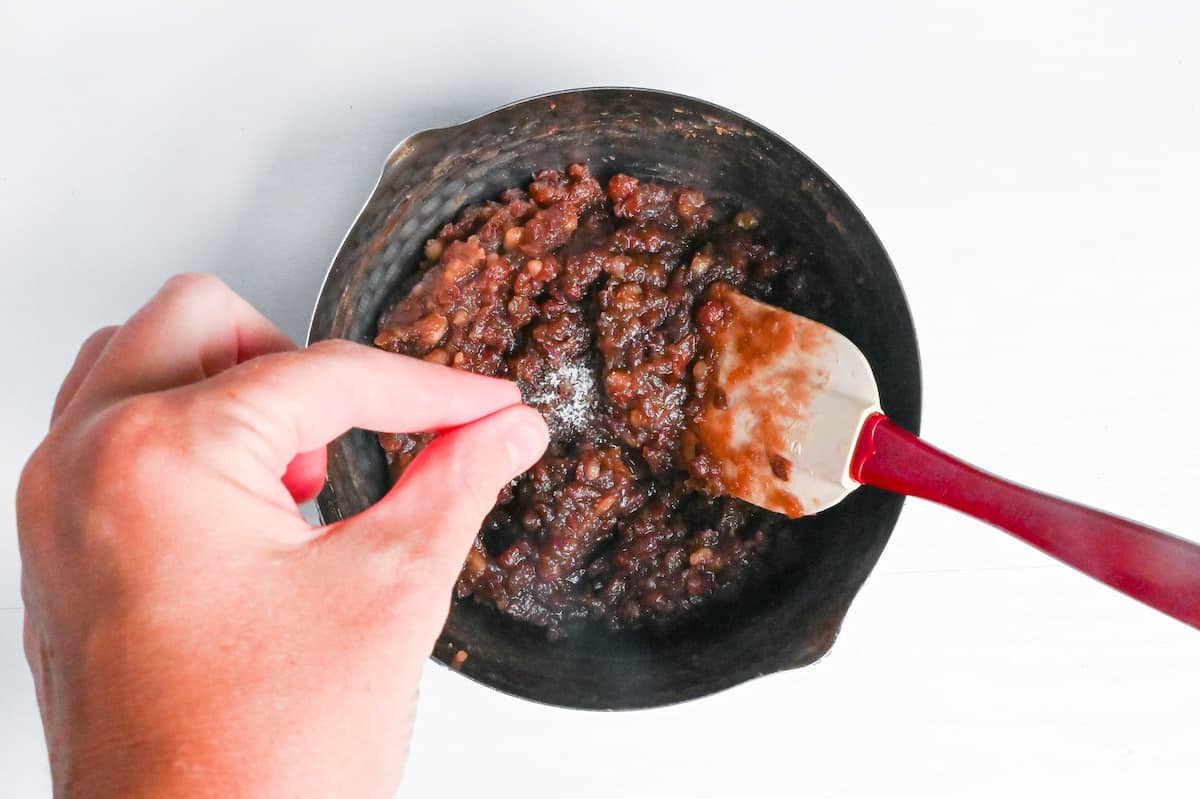
Remove the pot from the heat, add a pinch of salt and mix thoroughly.
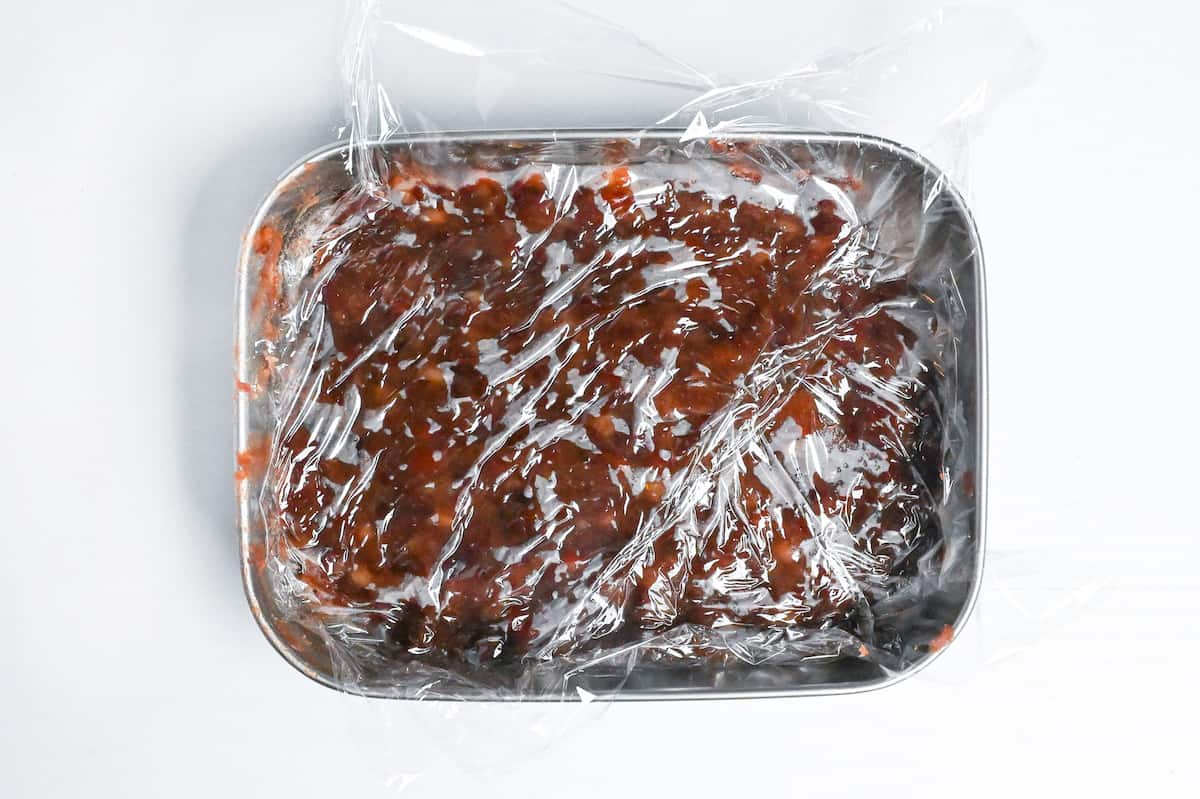
Transfer to a wide, heatproof container and cover with plastic wrap to stop it from drying out. Let it cool to room temperature, then seal the container with a lid and store in the refrigerator. (See below for more storage information.)
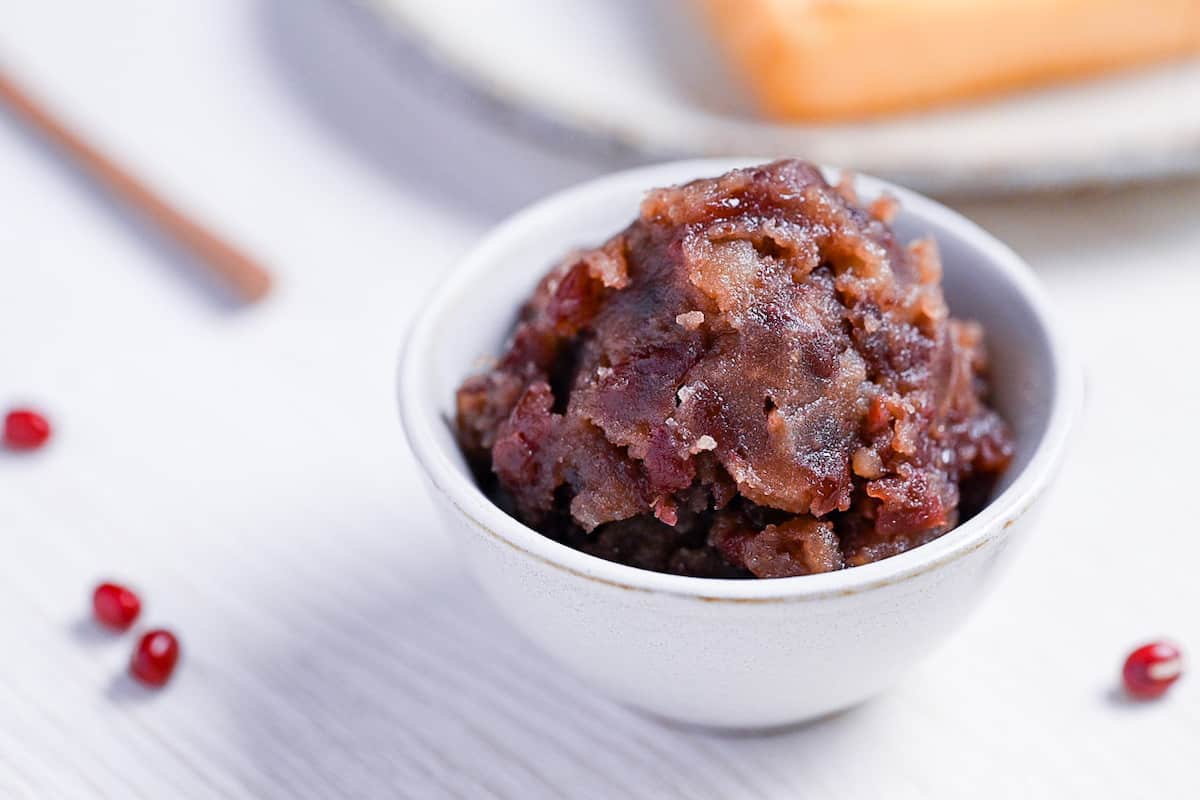
Your homemade tsubuan is now ready to use! Enjoy with your favorite Japanese dessert!
How to Store
Keep your homemade red bean paste in an airtight container in the fridge for up to 3 days.
If you can’t use it up in 3 days then it’s safer to freeze it. Divide the tsubuan into easy-to-use portions, wrap them with plastic wrap, and place in a sealable freezer bag before placing them in the freezer. Tsubuan can be frozen for up to 1 month.
Defrost before use. (Defrost in the microwave or thaw at room temperature. Once thawed, store in the refrigerator.)
Storage summary
Room temperature – Not recommended.
Refrigerated – Up to 3 days.
Frozen – Up to 1 month.
FAQ
Anko (餡子) is a sweet paste made with adzuki beans (red beans) and sugar. It is one of the most popular dessert fillings in Japan and commonly used to fill or top sweet dumplings, rice cakes, pastries and breads.
Tsubuan is made by crushing the boiled adzuki beans with the skins on, creating a red bean paste with a chunky texture. Koshian on the other hand, goes through a process of removing the skins resulting in a smooth and refined texture.
Anko is made with adzuki beans and sugar.
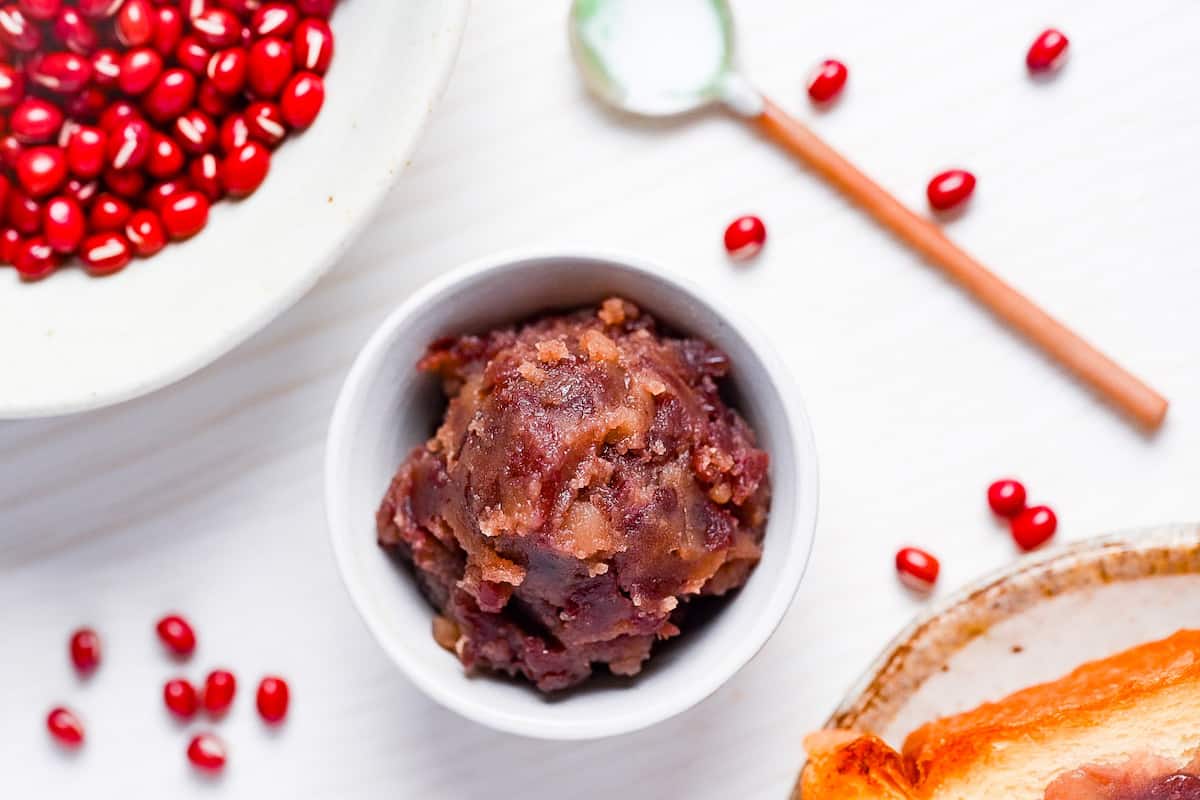
I hope you enjoy this Tsubuan recipe! If you try it out, I’d really appreciate it if you could spare a moment to let me know what you thought by giving a review and star rating in the comments below. It’s also helpful to share any adjustments you made to the recipe with our other readers. Thank you!
Use Tsubuan in These Recipes
- Dorayaki (red bean pancake)
- Taiyaki (fish-shaped waffle with red bean filling)
- Daifuku (mochi filled with red bean)
- An-Butter Toast (toast topped with tsubuan and butter, pictured below)
Want more inspiration? Explore my Japanese Dessert Roundup Post for a carefully selected collection of tasty recipe ideas to spark your next tea party!
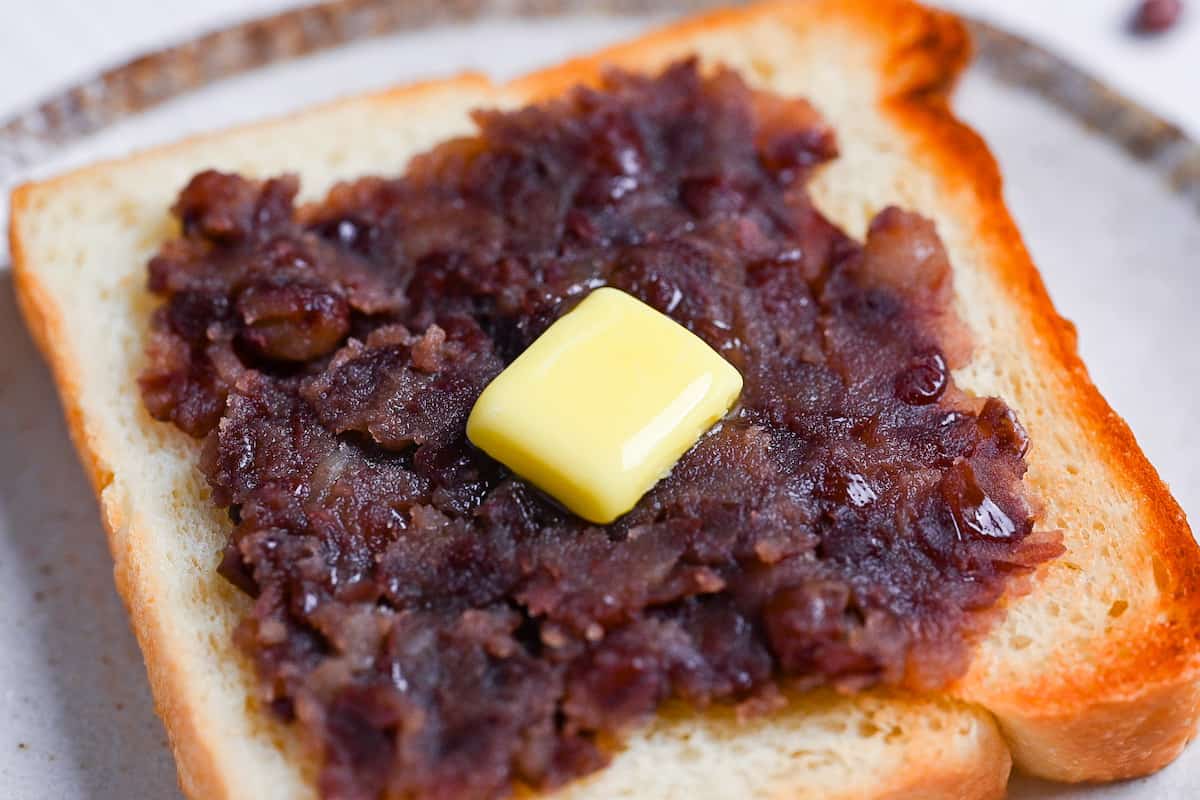
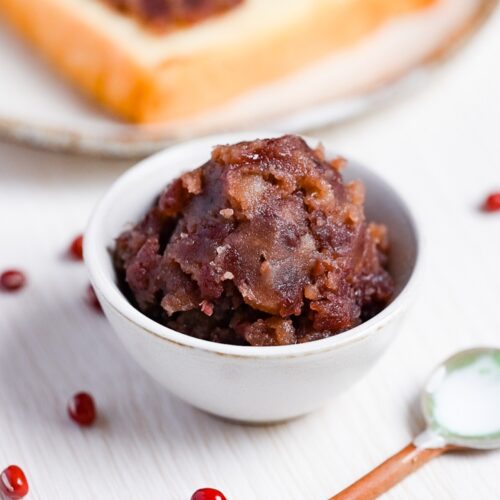
Homemade Tsubuan (Chunky “Anko” Sweet Red Bean Paste)
Ingredients
- 100 g dry adzuki beans
- 750 ml fresh water + extra for washing and first boil
- 100 g sugar I use 60% white sugar, 40% light brown sugar
- 1 pinch salt
My recommended brands of ingredients and seasonings can be found in my Japanese pantry guide.
Can’t find certain Japanese ingredients? See my substitution guide here.
Instructions
- Pour 100 g dry adzuki beans into a bowl and fill it with water until the beans are fully covered. Swill the beans around and then drain the water. Repeat 2-3 times to wash.

- Transfer the adzuki beans to a pot and fill with cold water until the beans are submerged. (The water should be 3-4 times the amount of beans.) Bring to a boil over a medium heat and cook for 10-15 minutes.

- Drain the water and discard.

- Rinse out the pot and pour the beans back. Pour 750 ml fresh water into the pot until the beans are fully submerged once more. Again, the water should be 3-4 times the amount of beans.

- Bring to a boil over a medium heat once more and scoop out any foam that forms on the surface of the water.

- Once it's boiling, lower the heat slightly and place a drop lid on top. Gently boil until the beans are fully softened (usually about 1 hour). Check the beans occasionally, stir them and top up the water as necessary so that they're always submerged.

- After 45 minutes, take a few of the larger beans, run under cold water and press them between your thumb and forefinger. If they're soft enough to spread like a paste, the beans are fully cooked. If it's a little hard in the middle, continue to cook. Check every 10 minutes until they're soft to the core.

- Once soft, turn off the heat and save a few tablespoons of the leftover cooking liquid in a bowl. Pour the beans through a sieve to drain the rest of the water.

- Return the beans to the pot and add a 1-2 tbsp of the cooking liquid. Save the rest for later just in case.

- Measure out 100 g sugar and add about one-quarter of it to the pot. Mix thoroughly and turn the heat on medium-low.

- Stir over the heat while lightly crushing the beans (don't crush too much). As it starts to thicken, add more sugar one-quarter at a time. Repeat until all the sugar is added.

- Continue to stir over the heat until slightly thickened. The consistency should be a little loose (but not watery). If it gets too thick, you can add a little more of the leftover cooking liquid.

- Remove from the heat and add 1 pinch salt. Mix thoroughly.

- Transfer to a wide container and cover with plastic wrap touching the surface to prevent it from drying out.Cool to room temperature, then seal the container with a lid and store in the fridge for up to 3 days. Alternatively, divide into portions and freeze for up to 1 month.

- Use your homemade tsubuan chunky red bean paste to make a variety of Japanese desserts!
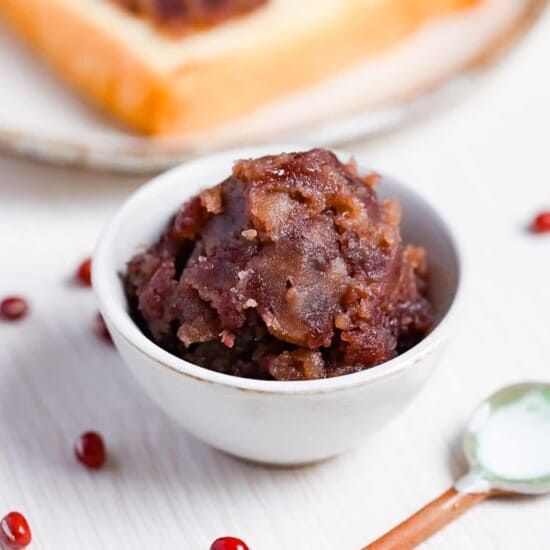


Dear Yuto,
yet another easy to follow and delicious recipe from you 🙂
Hope you know how much joy you bring to people like me that do not have easy access to japanese ingredients!
Greetings from the other side of the world
Dee
Hi Dee,
Thank you so much for your kind words! It truly makes me happy to know that my recipes are helping people enjoy Japanese cooking. I really appreciate you taking the time to cook this! Always happy to read your comment!
Yuto